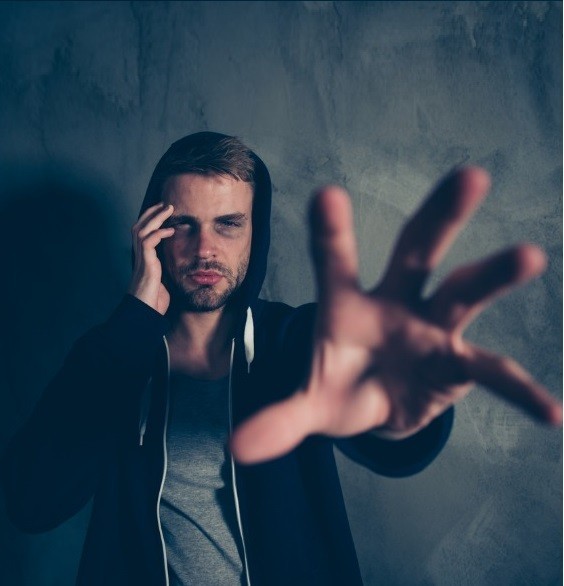What is a Benzodiazepine? About & Side Effects
In the United States, it is estimated that over 18% of adults meet criteria for an anxiety disorder. Of these, less than 40% receive treatment for their condition. Anxiety disorders are characterized by insomnia, racing thoughts, irritability, muscle tension, feelings of worry or doom, heart palpitations, and feelings of being out of control.
The treatment for anxiety disorders varies by circumstance and by the individual, but may include counseling or psychotherapy, antidepressants, buspirone, or benzodiazepines. While the first three options are typically used over the long-term, benzodiazepines are usually only prescribed for limited or short-term use in treating anxiety disorders.
What are Benzodiazepines?
Benzodiazepines, also known as benzos, are a class of prescription medications used primarily to treat anxiety. They are also approved for treating insomnia, panic disorders, seizures, depression, nausea and vomiting, and alcohol withdrawal, besides being used in general anesthesia and for muscle relaxation.
The exact mechanisms that cause benzodiazepines to be effective for treating anxiety are unknown. However, one theory is that benzos affect neurotransmitters, such as gamma-aminobutyric acid (GABA), helping to suppress and calm excessive nerve activity.
Benzodiazepines are classified as a Schedule IV controlled substance. This means that the medications are highly regulated by the United States federal government. They require a prescription to be legally attained, although they are also sold or traded illegally.
Benzodiazepines are known on the street by several names, including tranks, Candy, blues, downers, chill pills, bars, dippers, footballs, zannies/xannies, nerve pills, Heavenly blues, BZDs, goofballs, and Valley Girls.
Types of Benzodiazepines
There are several types of benzodiazepines, each with a different purpose and onset of action. Some examples of benzodiazepines are listed below.
- Diazepam (Valium)
- Used for: anxiety, muscle relaxation, anesthesia, and seizure disorders
- Onset of action: 30–60 minutes
- Duration of action: 1–3 days
- Clorazepate (Tranxene)
- Used for: anxiety, seizure disorders
- Onset of action: 30–60 minutes
- Duration of action: 3–8 hours
- Lorazepam (Ativan)
- Used for: anxiety, seizure disorders, anesthesia
- Onset of action: 1–3 hours
- Duration of action: 11–20 hours
- Alprazolam (Xanax)
- Used for: anxiety
- Onset of action: 1–3 hours
- Duration of action: 11–20 hours
- Clonazepam (Klonopin)
- Used for: seizure disorders
- Onset of action: 1–3 hours
- Duration of action: 1–3 days
Side Effects of Benzodiazepines
Benzodiazepines have several side effects that users must be aware of. Common side effects include:
- feeling unsteady
- muscle weakness
- dizziness or lightheadedness
- drowsiness
- headaches
- confusion or disorientation
- irritability, aggression, or hostile behavior
- slowed reflexes
- slurred speech
- dry mouth
- loss of appetite
- impaired judgment
- tremors
- excitability or euphoria
- mood swings
- memory impairment
- depression
- low blood pressure
- slow or abnormal heart rate
- slowed breathing
- blurred vision
- withdrawal symptoms upon stopping drug
Possible Drug Interactions
Benzodiazepines are known to interact with several medications and drugs. When used with alcohol, narcotics, tranquilizers, or barbiturates, excessive sedation can occur. If benzos are taken with fluoxetine (Prozac), cimtidine (Tagamet), valproic acid (Depakene or Stavzor), or ketoconazole (Nizoral or Xolegel), the liver may not be able to eliminate benzodiazepines from the body appropriately, leading to excessive benzo levels in the blood. Using antacids with benzodiazepines may result in reduced absorption of the benzo, impacting the drug’s effectiveness.
It is important to understand that using benzodiazepines with opioids, both prescription and illicit forms, such as heroin, can lead to severe sedation. The results of profound sedation can include coma, respiratory and cardiac depression, and death. Benzodiazepines and opioids should not be used together unless under the careful supervision of a trained medical professional and only for a limited time.
From Helping to Hurting: Benzodiazepine Addiction
Unfortunately, there are two important concerns with taking benzodiazepines that are often overlooked: the potential for physical dependance on the drug and the potential for drug abuse and addiction. While the majority of individuals prescribed benzos do take the medications safely and appropriately, the drugs have the potential to be misused due to their sedation and “feel good” side effects.
When benzodiazepines are used to treat anxiety, the tolerance level to the drug is often built up relatively quickly. Because of this, benzos are typically only prescribed for short-term or situational use, rather than for the long-term treatment of anxiety disorders. The risk of increased tolerance most often occurs in those who use benzodiazepines for six months or longer. When tolerance builds, increasing amounts of the drug are needed to experience the same effects. In some cases, doctors may prescribe additional benzodiazepines to help the patient with symptom reduction.
While this is an expected effect of using benzodiazepines for anxiety treatment, it is easy to see just how quickly dependence can develop. In many cases, the individual does not realize he or she is becoming dependent on the medication. By the time it becomes obvious, an addiction has already likely developed.
It is estimated that 40% of those that are prescribed benzodiazepines for addiction will ultimately become dependent on the medications, with a significant number experiencing abuse and addiction.
Signs of Benzodiazepine Addiction
Sometimes, the signs of a benzodiazepine addiction can be difficult to spot, especially since many of the signs mimic symptoms of anxiety disorders. However, if you or someone you know is taking benzodiazepines and experience the following, it is important to discuss the medication use with a doctor:
- constant fatigue and drowsiness
- excessive sweating without exercise
- frequent and intense headaches
- intense mood swings
- significant anger and irritability
- inability to focus
- withdrawal from friends and family
- no longer participating in recreational activities
- a reduction in school or job performance
- taking increased benzodiazepine doses
- taking medication more frequently than prescribed
- taking benzodiazepines that do not belong to you
- inability to meet financial obligations due to spending money buying more medications
- combining benzodiazepines with other medications or drugs, such as heroin
Long-term Consequences
The longer benzodiazepines are used, both as prescribed and as abused, the more likely it is that the user will face long-term consequences. Some people who use benzos for an extended period begin to experience visual and auditory hallucinations. Hallucinations refer to sensory perceptions that feel real but are not, such as hearing voices when there is nobody talking or seeing things that aren’t actually there. These experiences can be frightening and distressing. In some cases, hallucinations can cause an individual to act in bizarre ways, such as undergoing an act the individual claims was told to him by a voice.
Second, long-term use of benzodiazepines can affect your physical health, especially when the medication is used at higher doses. Some people might experience low blood pressure, which can lead to feeling lightheaded or dizzy. Muscle tremors, sudden onset of seizures, and difficulty breathing are also seen in those who use benzodiazepines over the long-term.
Third, long-term benzodiazepine use has been associated with increases in self-harm and suicidal ideation, especially as tolerance to the medication builds. It is not yet known why there is an increase in risk, but some research has suggested that changes in medication regimens or increased tolerance can lead to benzodiazepine withdrawal symptoms. In other cases, hallucinations, disorientation, or physical symptoms associated with long-term benzo use were thought to contribute to the development of suicidal ideation.
Research has also found that the risk of suicide increases when benzodiazepines are taken with opioids. While it is not yet known whether it is the combination of medications that cause an increase in suicidal ideation or whether it is the underlying conditions that resulted in both medications being prescribed, it is essential that doctors and mental health professionals frequently screen for depression and suicidal ideation in those individuals prescribed benzodiazepines and/or opioids.
Benzodiazepine Withdrawal
The effects of benzodiazepine withdrawal can be uncomfortable, and in some cases, even life threatening. If you are attempting to stop benzodiazepine use, you should expect both physical and psychological withdrawal effects. If benzodiazepines are stopped suddenly, the withdrawal effects might be so intense that it causes the individual to start taking the medication again to stop the withdrawal symptoms. For this reason, it is important that individuals not attempt to stop benzos cold turkey. Rather, benzodiazepine withdrawal and detox should occur under the care of a doctor, addiction specialist, or benzodiazepine addiction treatment center.
Initial Withdrawal Effects
During the initial withdrawal phase, you might experience something known as the rebound effect. This means that once you stop taking the medication, the symptoms you initially were treated for will return. This means that if you abruptly stop taking benzodiazepines, you will likely experience an increase in anxiety symptoms. Many also experience insomnia or other sleep disturbances if the medications are stopped cold turkey. Some current research indicates that the severity of the rebound effect is drastically decreased if benzodiazepines are stopped gradually rather than abruptly.
During the first few days of withdrawal, you might also experience nausea, an increased heart rate, changes in your breathing, and increased sweating. These withdrawal effects are short-term – one to four days in most cases – but can be quite uncomfortable. The symptoms can be managed with appropriate addictions treatment, however.
It is also important to understand that withdrawal symptoms will vary considerably depending on the type of drug you were using. For example, short-acting benzodiazepines, such as Tranxene, will cause withdrawal symptoms within hours of stopping. In contrast, long-acting benzos, such as Valium, may take several days before withdrawal symptoms are noticed.
Withdrawal Symptoms: Week 2
After the initial one or two weeks, the rebound effect and withdrawal symptoms will likely begin to reduce. While you might still be experiencing some effects, such as anxiety or difficulties sleeping, the intensity will continue to reduce. It is during this time where the craving for another pill will also begin to fade.
For individuals recovering from Valium addiction, the withdrawal process might extend several months or more due to Valium’s long half-life. It is essential to remain under the care of an addiction treatment specialist or rehab center to help you get through the withdrawal process and to help prevent a relapse.
During the withdrawal process, you may experience moderate to severe depression. Counseling and access to mental healthcare is an essential component of benzodiazepine addiction recovery. Because depression can lead to not only suicidal ideation but also the desire to self-medicate with drugs or alcohol, it is important to follow the recommendations of your mental health counselor.
Protracted Withdrawal Syndrome
 While many who seek help for benzodiazepine dependence or addiction can detox within a few months, there are some whose withdrawal process is long. Protracted withdrawal syndrome, also known as PAWS, can occur following long-term benzodiazepine use. In these cases, the withdrawal effects continue for months, to even a year or longer. There are rare cases of PAWS that persists for up to ten years, but in these cases, patients took benzodiazepines for a decade or longer.
While many who seek help for benzodiazepine dependence or addiction can detox within a few months, there are some whose withdrawal process is long. Protracted withdrawal syndrome, also known as PAWS, can occur following long-term benzodiazepine use. In these cases, the withdrawal effects continue for months, to even a year or longer. There are rare cases of PAWS that persists for up to ten years, but in these cases, patients took benzodiazepines for a decade or longer.
The majority of PAWS symptoms are psychological and mood-related, although physical symptoms are possible. Symptoms of PAWS can include anxiety, depression, insomnia, tinnitus, tingling or numbness of limbs, unusual skin sensations, muscle cramps, spasms, poor memory, and gastrointestinal symptoms that persist beyond the initial withdrawal period. Because the symptoms can be just as intense as during the initial withdrawal period, those experiencing protracted withdrawal syndrome are at risk for relapsing due to wanting to self-medicate and end the withdrawal symptoms.
In most cases, symptoms of PAWS are not continuous. You might experience two or three bad days and then begin to feel better, only to feel bad a few weeks later. PAWS can best be described as a roller coaster with unexpected starts, stops, and turns.
Getting Help for Benzodiazepine Addiction
It is important to know that you are not alone in your fight to get off of benzodiazepines. Addiction and recovery can be a complicated process but it’s important to take the first step and reach out for help. Because the effects of benzodiazepine withdrawal can be severe and intense, working with professionals trained in benzo addiction and treatment is essential to ensure that you can withdraw from the medications safely and avoid a relapse.
Tapering Off Medications
Many benzodiazepine addiction treatment plans include the use of a tapering off protocol. While it may be tempting to quit using benzos cold turkey, sudden discontinuation of benzodiazepines can lead to intense withdrawal symptoms, including seizures, psychosis, depression, or suicidal ideation. Those who have used high doses of benzos or who have used the medications for extended periods of time are at a higher risk of an intense withdrawal experience. Severe withdrawal symptoms also increase the risk of relapsing to reduce the symptoms.
Tapering off medications involves taking smaller doses of the medication, continuing to reduce the dosage in set intervals. If the medication dose is gradually reduced, you may not experience significant withdrawal effects, and the risk of PAWS is also greatly reduced.
Sometimes, tapering protocols require substituting a short-acting benzodiazepine with a long-acting one to help minimize side effects. While it might make you concerned to be prescribed another benzodiazepine as you are trying to quit taking them, it is important to follow your doctor or treatment specialist’s advice. A gradual tapering might be the best way for you to safely stop taking benzodiazepines while also greatly reducing the chances of a relapse.
Rehab and Treatment
Fortunately, benzodiazepine addiction and dependence can be treated. If you or someone you know is showing symptoms of benzo addiction, it is important to take the first step and contact rehab facilities that specialize in medical detox from benzodiazepines. The care teams at these facilities can help you safely wean and detox from the medications, reducing the physical and psychological withdrawal symptoms and reducing the risk of a relapse.
Rehab and treatment will typically require several stages. The first, detox, will assist you in managing withdrawal symptoms. Then, you will likely undergo group counseling, cognitive behavior therapy, or other forms of mental healthcare to help you learn healthy coping strategies and manage anxiety or depression. Detox and therapy may happen in either on inpatient or outpatient basis, depending on your specific situation. Finally, you will undergo aftercare treatment designed to offer you the support you need to avoid relapsing and to help you live a healthy and clean life.

